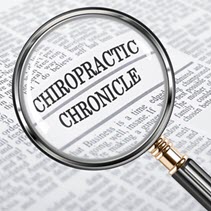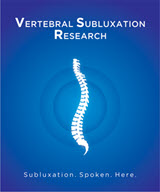New Research Sheds Light on Autism

CLICK HERE to review the research
“Research indicates that minor shifts in the structure of the spine may impact function, suggesting that these structural shifts may be a factor in a number of disorders. Structural shifts may lead to nerve obstruction and could possibly be involved in a host of health problems such as autism and other neurobehavioral challenges” stated Dr. Matthew McCoy, a chiropractor, public health researcher and editor of the journal that published the study. Other chiropractic researchers have reported on similar results and reviews of the scientific research reveal numerous other studies that have shown similar connections.
McCoy added, “It’s reasonable to suggest that if you obstruct or damage the nerves exiting the spine, the result of the obstruction(s) and/or damage can have far reaching implications on the functioning of the body. Through research reports like this we are finding that correcting these structural shifts reduces nerve obstruction, bringing about marked improvement in children who are experiencing a variety of neurobehavioral challenges.”
Research is revealing that there is a relationship between abnormalities in the spine, the nervous system, and the brain. Basic science and clinical research shows that the proper development of the brain relies heavily on proper structure and movement of the spine from an early age.
Research has shown not only that the developing brain relies on normal structural integrity and joint movement, but that complex neurochemical communication and pathways involved in helping humans to respond to their environment are tied into spinal biomechanics and their related neurological pathways.
“It makes perfect sense when you think about it” stated McCoy. “Neurobehavioral disorders such as autism may be related to how the entire body communicates with the brain and the most critical area for this is the spine.”
Some researchers believe that the increase in the diagnosis of such disorders as autism, ADHD, pervasive developmental disorder, Tourette’s Syndrome, obsessive compulsive disorder and other neurodevelopmental disorders, have their root in a “perfect storm” of abnormal spinal development.
The child reported on in this study was a 3-year-old boy with autism who was suffering from chronic constipation, fussy eating, easily gagging and vomiting, insomnia, anxiety, poor weight gain and hyper sensitivity to touch. He was easily agitated, restless and fell often for no apparent reason as if he temporarily lost consciousness. He had chronic ear and sinus infections since infancy.
The chiropractor examined him and found abnormal posture and structural shifts in his neck, mid and low back. These structural shifts can lead to obstruction of the nerves and it is this obstruction, called vertebral subluxations, that chiropractors correct. Testing of his nervous system confirmed the neurological obstructions.
The boy was adjusted by the chiropractor over a period of 12 visits and the parents reported improvements to his behavior, communication, sociability, frequency of falls, anxiety and sleeping patterns. His vocabulary had increased significantly, he was speaking in sentences more frequently and he was interacting well with others and showing compassion.
His postural abnormalities improved, vertebral subluxations were reduced and follow-up nerve testing revealed a decrease in obstruction.
The study’s author called for additional research to investigate the clinical implications of chiropractic in children with autism.
Contact Information:
Matthew McCoy DC, MPH
Journal of Pediatric, Maternal & Family Health – Chiropractic
http://www.chiropracticpediatricresearch.com
drmatthewmccoy@gmail.com

Research News
- The 19th International Research and Philosophy Symposium (IRAPS): Bridging Philosophy, Science, and Practice in Chiropractic
- New Study Uncovers the Broad Systemic Benefits of Chiropractic Care on Nervous, Endocrine, and Immune Systems
- The Hidden Power of the Spine: How Vertebral Subluxation Impacts Health Through Systems Biology
- New Study Sheds Light on Vertebral Subluxation and Systems Biology
- Understanding Cervical Spine Movement and Motor Vehicle Accidents













